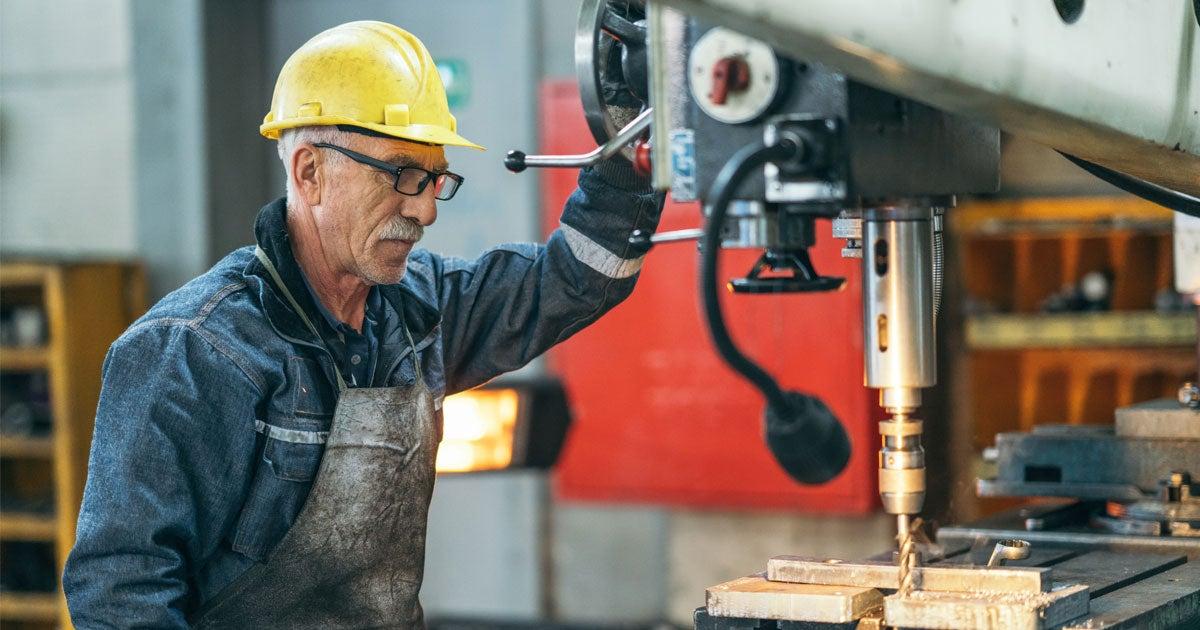Writing Your Resume After Age 50: A Guide for Older Adults
9 min read

Since 1985, an increasing number of adults age 65 and older have chosen to remain in or reenter the workforce, either by choice or out of financial need. In 2024, 27% of adults age 65 to 74 were actively working. That figure is expected to grow to nearly 30% by 2034, as more older Americans look to improve their financial security an dstay active and engaged in their communities.2
Compared to their younger counterparts, older adults can face more barriers to finding gainful employment. One example is ageism—discrimination against older people due to negative and inaccurate stereotypes. While you may know you have what it takes to perform a job, some employers still believe mature workers are “overqualified” or lacking contemporary skills. Combating these stereotypes starts with having a thoughtfully crafted, up-to-date resume.
Why is a resume important for older workers?
Throughout the hiring process, employers rely on your resume to learn more about you and determine whether you’re a good fit for their organization. It’s an opportunity to highlight your qualifications, attributes, and relevant experience and convince employers you're the right person for the job.
A professional resume should always include these key pieces of information:
- Full name and contact information (phone and email)
- Professional summary (formerly known as the “objective”)
- Work experience and history
- Applicable skills
- Educational background
Wondering how to write a resume at 50+ years old? Use the nine strategies below to create one that increases your odds of landing a job interview.
9 resume tips for mature workers
1. Choose the right resume format
What is the best resume format for older workers? There are three main types:
- Chronological: This format focuses on your work history, which is presented in chronological order with your most recent employment at the top.
- Functional: This option focuses more on your relevant skills versus your work history.
- Hybrid: This approach combines certain elements of the chronological and functional resume formats to create the ideal professional profile.
In most cases, older workers should stick to the tried-and-true chronological format. This allows you to display your years of experience—your leg-up over younger candidates. But if you've been out of the workforce for a long time, a functional resume will allow you to keep the focus on your skills rather than any gaps in your work history.
No matter which format you go with, try to keep your resume to one or two pages. Browse this library of resume examples across different industries to get started.
2. Limit your work history to 10 to 15 years.
As an older job seeker, there's no need to share your entire work history. Include only those positions most meaningful to the job you're applying for, held during the last 10 to 15 years. If there are major achievements you want to highlight that extend beyond that timeframe, Indeed.com recommends adding an "Early Experience" section. This section should not feature specific dates of employment.
3. Don’t include graduation dates.
In the same token, leave graduation dates out of your education section. List only the degrees you hold (with the most advanced degrees first), schools you attended, and any recent training or certifications. This can help reduce the chances of age discrimination while still playing up your credentials.
4. Make the most of your professional summary.
Once called the “objective,” the professional summary is an introductory paragraph on your resume that highlights your biggest skills and achievements. If you have a solid work history, this is your chance to shine! Be sure to include any industry credentials you have and what essential skills, experience, and attributes you bring to the table. Avoid industry jargon that may not resonate with younger hiring managers. And don’t include specifics related to your years of experience (for example, "25 years").
5. Emphasize your technology skills.
A common misconception about older adults is that they haven't kept in step with technological advancements. You can remedy this by adding a section to your resume that highlights your experience and comfort with modern software and platforms (such as Microsoft Excel, PowerPoint, or ChatGPT). If a job you're applying to mentions a technology you're proficient in, make sure you include it in the experience or skills section of your resume. Steer clear of listing any outdated technologies.
✅ Tip: Want to quickly add more technology skills to your resume? IBM SkillsBuild offers a series of free, self-paced online courses covering topics like:
- The basics of AI (artificial intelligence)
- Essential career management skills
- Professional skills that set you apart to employers
- Making digital tools work for you
- Navigating the digital world with confidence
- The newest workplace technologies
Once you finish each free course, you'll earn a digital credential to showcase your new skills. Signing up is quick and easy:
- Click on one of the course links above.
- Create a free account using your email or Google account.
- Click "Enroll" and start learning at your own pace.
6. Use a modern font (typeface style).
Using certain fonts on your resume can instantly tip off employers that you're an older job seeker. Stay away from serif fonts such as Times New Roman—these do not translate well to a computer screen and are rarely used in business today. Plus, serif fonts are difficult for applicant tracking systems to read, which means your resume may never land on the desk of a real person. Instead, stick to smoother, sans-serif fonts such as Arial and Geneva. A size 12 font is the standard size and will make your resume easy to read.
7. Include a healthy dose of action verbs
Using action verbs can help you create a more compelling resume that stands out to potential employers. They're especially valuable when describing your work experiences and accomplishments. Examples of resume-boosting action verbs include:
- Enhanced
- Supported
- Proposed
- Created
- Performed
- Initiated
- Planned
- Introduced
- Collaborated
- Presented
- Negotiated
- Designed
8. Tailor your resume to each new job opportunity
Keep in mind you’ll want to modify your resume for each job listing. Why is this important for older job seekers? It gives you a chance to highlight the skills most relevant to the role you're applying to. You can also feature keywords that make your resume stand out to hiring managers who have specific skills on their wish list. Constantly tweaking your resume can be labor-intensive, but it’s well-worth the time and effort.
"Older workers tend to have a boatload of experience—often in many different functional areas," resume expert Kim Isaacs told Monster. "So the challenge is to whittle the resume content down to what employers would find most valuable."
9. Show you’re connected by sharing your LinkedIn profile
As an older worker, you want to show employers you're current with the latest communication technologies. One way to do this is by including a link to your new or updated LinkedIn profile on your resume. LinkedIn is a powerful platform for creating and promoting your "personal brand." Think of it as your online resume. The guidelines above still apply—but here are some additional suggestions for age-proofing your digital calling card:
- Use a recent photo for your profile: Avoid using an outdated photograph where you look younger; it’s better to be transparent about your age. Use a professional headshot if possible, but otherwise, a DIY headshot is fine (remember to smile!). Avoid distracting backgrounds—such as a messy home office—and wear interview-appropriate attire.
- Include keywords in your headline: Use language pulled directly from the job descriptions you're responding to. Be sure to stick with current terms (for example, "proficiency in Microsoft Word" versus "word processing skills").
- Use first-person language in your summary (“About” section): This simple practice can help modernize your LinkedIn profile and create a more personal connection with the people who view it.
- Include volunteer leadership positions and other accomplishments: These are areas where your age can be a true asset. Don't be shy about noting any high-level volunteer roles, awards, or honors that relate to the type of position you seek.
- Collect recommendations: LinkedIn recommendations are written testimonials from other members who know your professional worth firsthand (such as a former colleague or supervisor). You can get recommendations simply by requesting them from your LinkedIn connections. Giving recommendations to others can often encourage them to return the favor.
New to LinkedIn? Here’s a simple tutorial to help you sign up and create your profile.
Are you an older worker who needs help finding a job?
Looking for your next opportunity? Or re-entering the workforce after time away? NCOA's career resource, Job Skills CheckUp, is designed to help older adults thrive in today's job market. Simply share your career objectives and tell us about your present work status. Job Skills CheckUp will generate a customized action plan to help you find job listings, expand your professional connections, get ready for interviews, and more.
The Senior Community Service Employment Program (SCSEP) is also here to help. Created in 1965, SCSEP is America’s oldest program to help older adults with low income find work. It matches eligible applicants (age 55+) with paid, part-time training assignments for nonprofit organizations.
A note about SCSEP: Like many federally funded programs, SCSEP is going through some changes. Here's what you should know:
- The program is still available. SCSEP has not ended and continues to operate in many communities.
- Funding differs by location. Some areas saw temporary pauses in 2025, while others received funding later and restarted services.
- Start times vary. Available opportunities depend on where you live and current funding levels.
Is it still worth applying to SCSEP? Yes! Applying now can help ensure you're among the first to know when there are openings. To apply, find your local SCSEP office.
Source
1. U.S. Bureau of Labor Statistics. Employment Projections: Civilian labor force participation rate by age, sex, race, and ethnicity. Found on the internet at https://www.bls.gov/emp/tables/civilian-labor-force-participation-rate.htm




